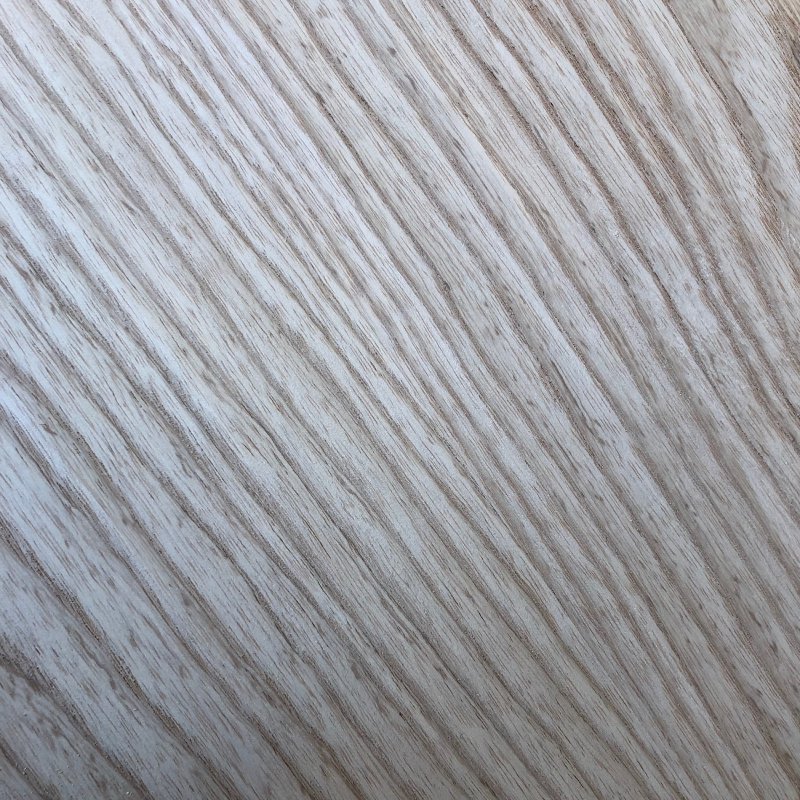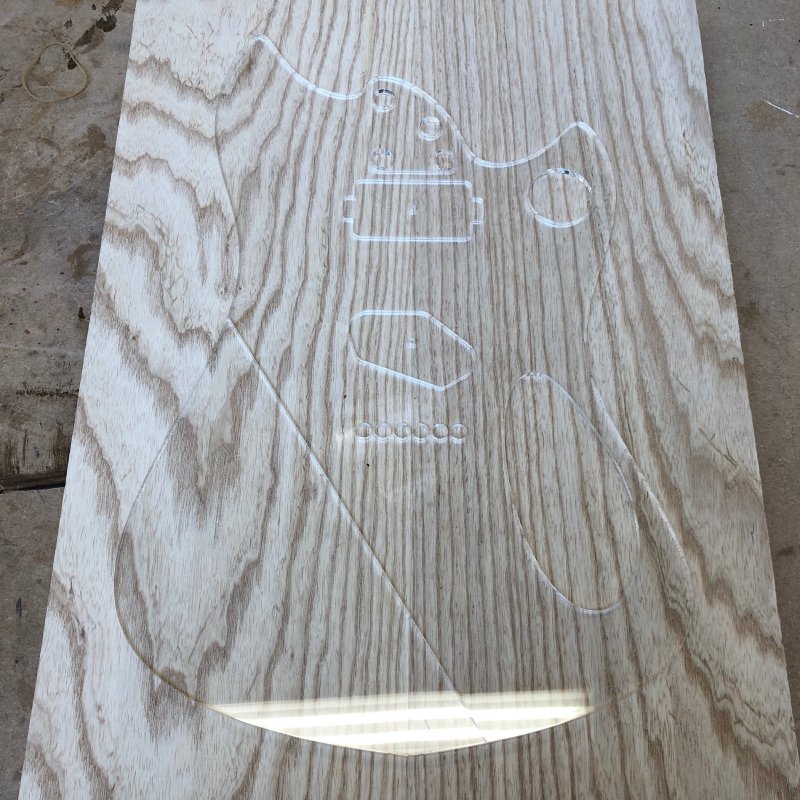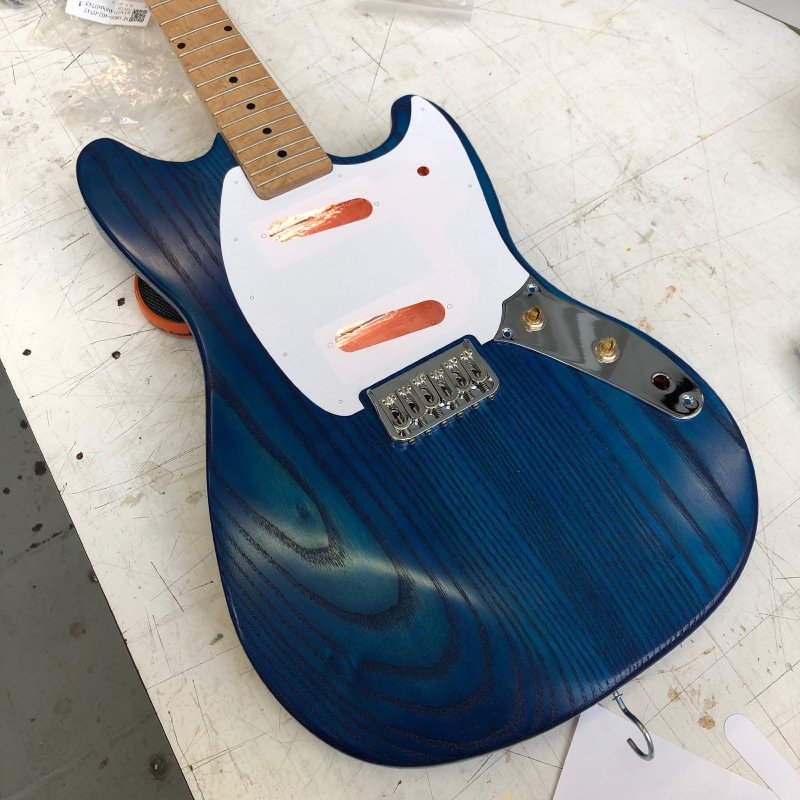One seventh of a week in the shop
Published 14 Apr 2019
This week I took the body blank I glued up last week and got it ready for turning into an actual guitar body. Whilst I plan on doing all of this guitar by hand rather than using the CNC Router for bits of it as I would normally, I made one exception to that rule for thicknessing. Makespace, the community workshop where I work, doesn’t have a planer thicknesser machine, which is what you’d normally use to get planks to the right depth. Instead I did the much slower way of using the CNC Router with a 2” wide bit to shave off 0.5mm layers repeatedly.

It took me about 2 hours just to get both sides perfectly parallel and free from the machine marks. I’ll need to go at it a little more to get it down to the right depth for the guitar design I have in mind, but at 2 hours of shaving half mm layers off my attention was starting to wane.
However, it was enough to let me see how well my jointing had been, and after all the effort I was pleased there was no visible glue line along the seam, and thanks to careful matching of the grain direction on the front it’s quite hard to tell there’s a seam at all.

Having exposed the top surface, I had a quick look with the template for the body I laser cut last week, only now I removed the protective film on the acrylic so that you can see why I chose clear acrylic for the job:

This has two advantages. Firstly, you can see the grain under the template and know exactly what it’s going to look like once you cut it out. Secondly, I etched in some guide lines to show me where things like pickups would be, plus a centre line to help with alignment.

The template is actually etched backwards, so that the centreline is against the wood when I place the template down, so as to remove alignment errors due to parallax.
I’m very happy with the way it’s looking, I just need to remove about another 4 mm of thickness from the body blank and we’ll be good to go.
Having discovered the new CNC Router controller wasn’t compatible with Fusion 360, I was slightly slowed down on the making of the pick guard for the Recovery Offset guitar. One thing I like about Fusion 360 for CAM is the control it gives you over all aspects of the tool paths it generates, letting you take into account the physical qualities of the material you’re using to get the best finish you can.Thus, I set about trying to work out if in vCarve, the default software we train people to use with the CNC Router at Makespace, I could get things like gentle drill pecking to work. Last time I’d tried this with vCarve the drill rate was so aggressive it split the acrylic I was machining, but I was actually able to get vCarve to do what I wanted this time, which I guess means either it’s had an update or I just know what to look for better these days (or both, obviously).
Convinced I had a way to make the pick guard, I then did a test cut in paper and card again.

Although this is my third mustang styled build, each pick guard is different as I’ve not yet used the same combination of pickups, pickup selector, and bridge, so I have to tweak it each time. It took a couple of paper iterations to get everything lined up, but now I’m ready to try cutting the nice tortoiseshell acrylic I have next week.
One thing I did for fun was take a picture of the body and neck blanks for the new guitar alongside the Recovery offset. Even in it’s incomplete state you can get a sense of perspective of how far the wood has to journey to go from raw material to the finished product:

People often raise an eyebrow when I given them a rough price for building a guitar, but this picture shows you how much I have to do by hand to get from raw wood to something as beautiful as a custom guitar. If you want a cheap guitar then guitar shops are full of very good affordable guitars, and you should look there. If you want a custom guitar made by hand for you, then it just takes a lot of time and effort, and the price reflects that. For that price you do get something that is unique to you, and designed to be the right guitar for your play style and tastes, but I appreciate they are not cheap. But I hope people enquiring similarly appreciate how much effort they take to build to a high quality.
There’s been a flurry of event related stuff this week. I’m now going to be talking at the wonderful Wuthering Bytes Festival Day event up in Hebdon Bridge in late August. I’ve been to this event for the last two years, and it’s a great celebration of the intersection between art and technology, and I’m honoured to be taking part.
I saw, thanks to a tip off from my friend Adrian, that Glasgow Maker Faire has a call out for people to show things, and so I’ve put in a proposal to show off how you can make an electric guitar there. It’s a bit of a hike, but it’d be lovely to be able to not only take part in a Maker Faire, but also to do so in my former home town.
All of which reminds me I still need to do a trial run of my stand for Liverpool Makefest! Seems a long way away, but it’s almost just two months away.